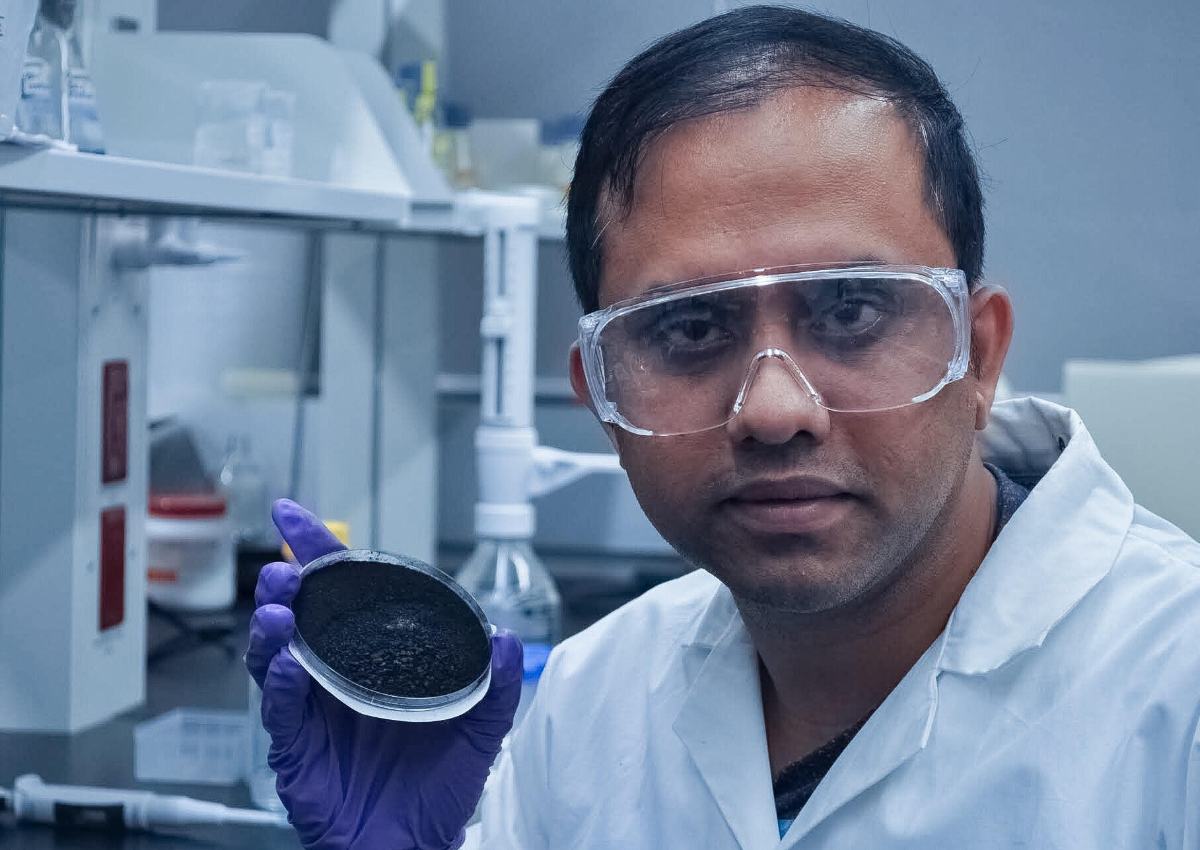
Associate professor Daniel Alessi conducted the research into tailor-making charcoal for different applications with former PhD student Samrat Alam, pictured here with a sample of biochar. Image courtesy of Samrat Alam.
In the last decade, biochar has attracted global attention for its low cost and many uses, ranging from water treatment to soil remediation to greenhouse gas management. Now, research from University of Alberta geochemists shows that biochar can be purpose-built for its intended application.
Biochar, which is a form of charcoal produced in the absence of oxygen, is made when organic material is heated to temperatures between 300 and 700 degrees Celsius. It has been used for millennia for agricultural purposes. In the modern world, it has applications for removing environmental contaminants and increasing fertility.
"First, biochar is an excellent sorbent, meaning that it can be very effective for removing pollutants and contaminants from water," said Daniel Alessi, associate professor in the Department of Earth and Atmospheric Sciences and the Encana Chair in Water Resources. "Second, it has the potential to increase agricultural fertility, removing contaminants and adding concentrated nutrients to soil."
Alessi conducted this research with former PhD student Samrat Alam, now a postdoctoral fellow at the University of Toronto. The pair used advanced spectroscopic techniques to examine the molecular-scale mechanisms of metal binding to biochar, studying how its production process can be adjusted to make purpose-built biochar, yielding biochar that is more effective and more efficient for its desired purpose.
"The properties of biochar can be tuned and tailored further to enhance its efficiency in specific applications by controlling production technologies, like temperature and feedstock," explained Alam. "Our research considerably improved our understanding of molecular-scale mechanisms of biochar reactivity and the relationship between biochar surface properties and its reactivity."
The findings speak to the potential of biochar as a low-cost, highly effective solution for agriculture and remediation alike, including newer applications, such as carbon storage.
"Biochar can be capable of holding and storing carbon for hundreds, and even up to a thousand, years," explained Alessi. "It's not forever, but it does take carbon that could have been released into the atmosphere and keeps it stored for up to a millennium."
As carbon dioxide continues to accumulate in the atmosphere, with drastic effects on the climate, technologies like biochar able to safely store carbon are of ever-increasing importance.
The papers, "Mechanisms of the Removal of U(VI) from Aqueous Solution Using Biochar: A Combined Spectroscopic and Modeling Approach" and "Thermodynamic Analysis of Nickel(II) and Zinc(II) Adsorption to Biochar," were published in Environmental Science and Technology.